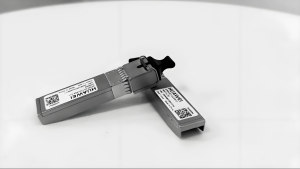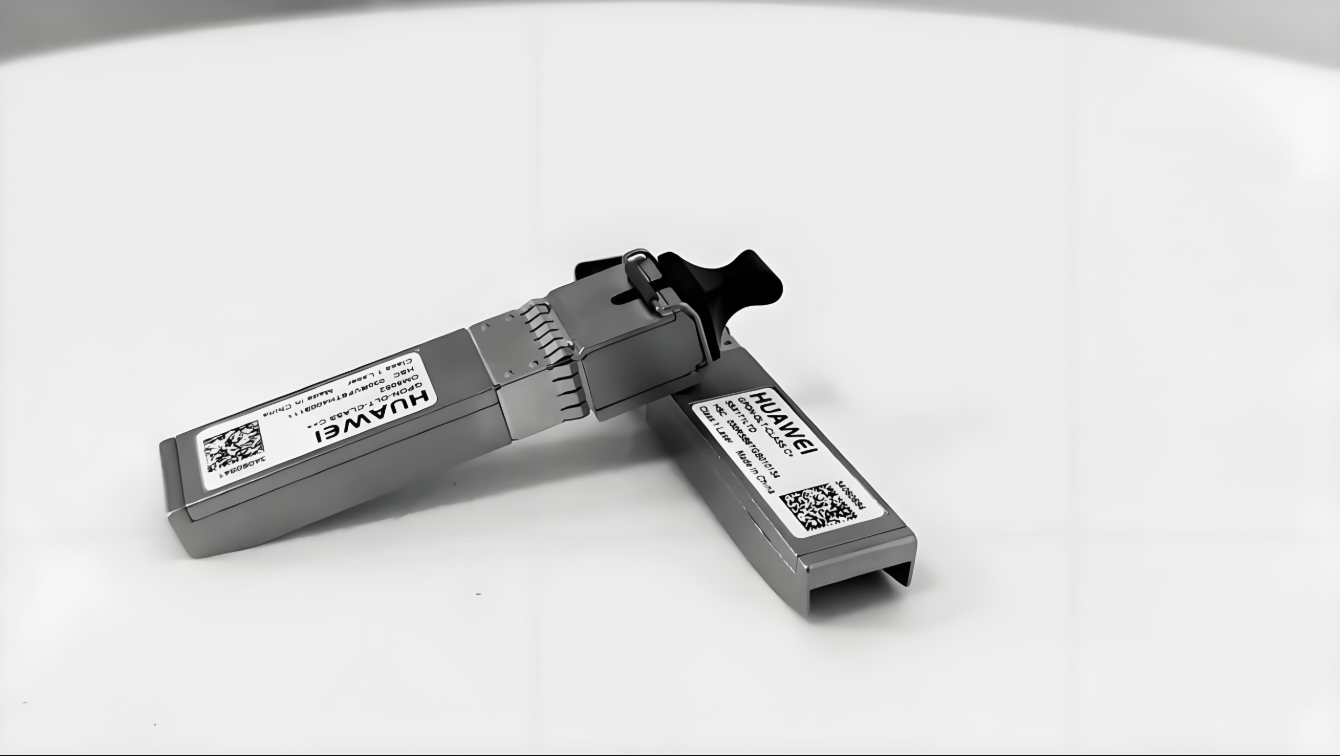Deploying a 10G network requires careful selection of optical transceivers to ensure performance, cost efficiency, and compatibility. Among the most widely used 10G SFP+ modules are SR (Short Reach), LR (Long Reach), and LRM (Long Reach Multimode). Each has distinct characteristics tailored to specific scenarios. This guide breaks down their technical differences, use cases, and selection criteria.

1. Technical Specifications Comparison
| Parameter | SFP+ SR (10GBASE-SR) | SFP+ LRM (10GBASE-LRM) | SFP+ LR (10GBASE-LR) |
|---|---|---|---|
| Fiber Type | Multimode (OM3/OM4) | Multimode (OM1/OM2/OM3) | Single-mode (OS2) |
| Wavelength | 850 nm | 1310 nm | 1310 nm |
| Max Distance | 300 m (OM3), 400 m (OM4) | 220 m (OM1/OM2/OM3) | 10 km |
| Transmitter Type | VCSEL | FP/DFB Laser | DFB Laser |
| Power Consumption | Low (~1W) | Moderate (~1.5W) | Moderate (~1.5W) |
| Cost | Low | Moderate | High |
| Key Standard | IEEE 802.3ae | IEEE 802.3aq | IEEE 802.3ae |
2. Module-Specific Analysis
A. SFP+ SR (10GBASE-SR)
-
Best For: Short-range, high-density connections within data centers (e.g., server-to-switch, intra-rack links).
-
Pros:
-
Cost-effective due to VCSEL laser and multimode fiber (MMF) compatibility.
-
Low power consumption.
-
Ideal for OM3/OM4 fiber (common in modern data centers).
-
-
Cons:
-
Limited to 400 m (OM4).
-
Not backward-compatible with older OM1/OM2 fiber beyond 33–82 m.
-
B. SFP+ LRM (10GBASE-LRM)
-
Best For: Legacy multimode fiber upgrades (e.g., extending 10G over existing OM1/OM2 cabling).
-
Pros:
-
Supports older MMF (OM1/OM2) up to 220 m.
-
Avoids costly fiber replacement in aging infrastructures.
-
-
Cons:
-
Requires Electronic Dispersion Compensation (EDC) to mitigate modal dispersion, increasing complexity.
-
Higher latency and power draw compared to SR.
-
Limited adoption due to niche use cases.
-
C. SFP+ LR (10GBASE-LR)
-
Best For: Long-haul connections between buildings, campuses, or metro networks.
-
Pros:
-
Achieves 10 km over single-mode fiber (SMF).
-
Future-proof for scalable networks.
-
No modal dispersion issues (SMF’s core is smaller, reducing signal distortion).
-
-
Cons:
-
Higher upfront cost (laser and SMF expenses).
-
Overkill for short-distance data center links.
-
3. How to Choose: Decision Factors
Factor 1: Fiber Infrastructure
-
Existing Fiber Type:
-
If using OM3/OM4 MMF: Choose SR for cost efficiency.
-
If stuck with OM1/OM2 MMF: Use LRM (but verify EDC support on switches).
-
For SMF (OS2): Opt for LR for long-distance reliability.
-
-
Distance Requirements:
-
≤ 400 m: SR (MMF).
-
220 m over legacy MMF: LRM.
-
≥ 1 km: LR (SMF).
-
Factor 2: Budget Constraints
-
Low Budget: Prioritize SR (cheaper modules and MMF cables).
-
Legacy Upgrade: LRM avoids fiber replacement costs but requires EDC-capable hardware.
-
Long-Term Investment: LR + SMF offers scalability but demands higher initial spending.
Factor 3: Compatibility & Future-Proofing
-
Switch Compatibility: Confirm vendor support (e.g., Cisco, Juniper) for LRM’s EDC.
-
Future Needs: If planning to scale beyond 10G (e.g., 25G/100G), SMF (LR-compatible) is more versatile.
Factor 4: Power and Latency Sensitivity
-
Energy Efficiency: SR consumes less power, ideal for dense data centers.
-
Latency-Critical Apps: SR/LR outperform LRM due to simpler signal processing.
4. Common Pitfalls to Avoid
-
Mixing Fiber Types: Deploying SR modules over OM1/OM2 fiber causes drastic range reduction.
-
Ignoring EDC Requirements: LRM modules may fail if switches lack EDC support.
-
Over-Specifying LR: Using LR for short links wastes costs on unnecessary SMF infrastructure.
5. Market Trends & Alternatives
-
Declining LRM Adoption: With OM3/OM4 becoming standard, LRM is now niche.
-
BiDi (Bidirectional) SFP+: Uses single fiber strand for cost-effective 10G up to 20 km (e.g., 10GBASE-BX).
-
Copper SFP+ (10GBASE-T): For ≤ 30 m over Cat6a/Cat7, but higher latency and power.
Conclusion
The choice between SR, LRM, and LR hinges on three pillars: fiber type, distance, and total cost of ownership (TCO). For modern data centers with OM3/OM4, SR remains the go-to solution. LRM serves as a bridge for aging MMF infrastructures, while LR dominates long-haul SMF deployments. Always validate compatibility with existing hardware and align selections with future scalability goals.
By balancing technical requirements with economic realities, network architects can ensure optimal performance without overspending — a critical skill in an era where 10G is the backbone of digital transformation.


Comments are closed